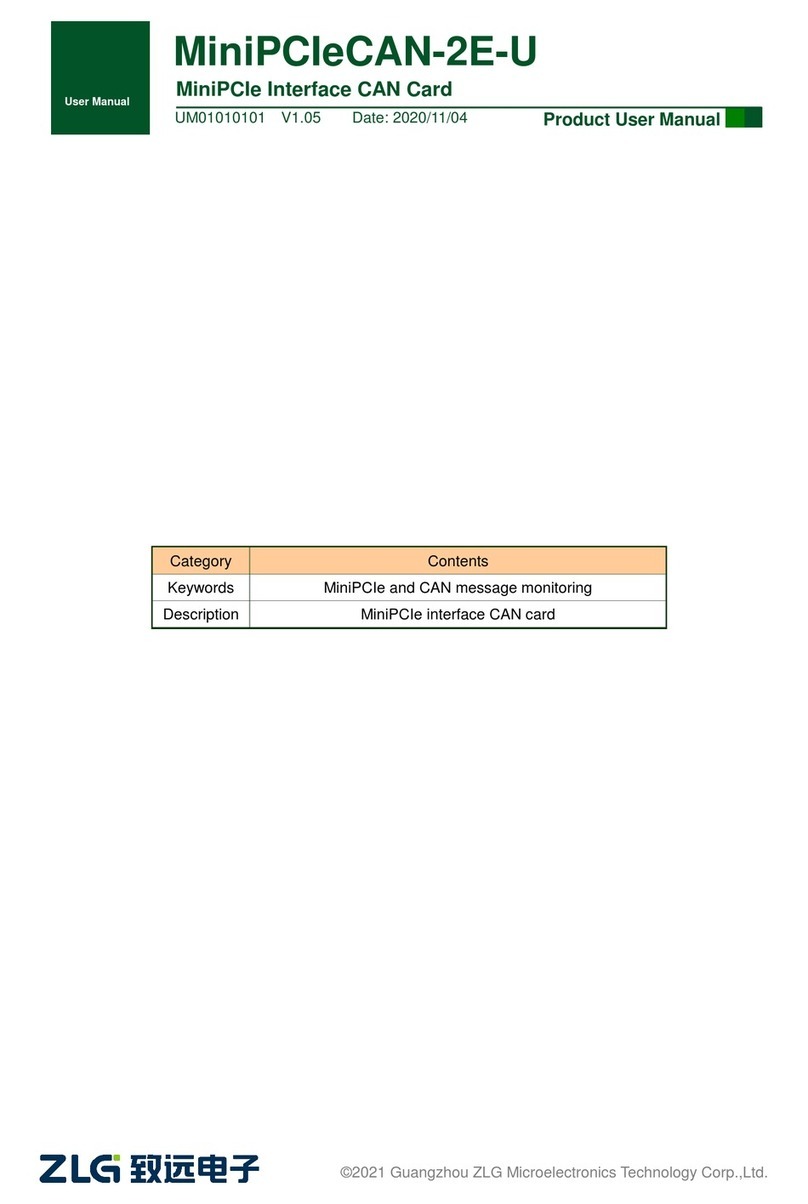C
Ch
ha
ap
pt
te
er
r
1
1:
:
F
Fu
un
nc
ct
ti
io
on
n
I
In
nt
tr
ro
od
du
uc
ct
ti
io
on
n
1.1 Overview
The PCIe-9140I device is a 4-channel PCIe-CAN communication interface card in
compliance with PCI Express r1.0a specification. It supports PCI Expressx1 interface,
and allows a PC to easily connect to the CAN-bus network, implementing real-time
multiple bus network monitoring with easy usage and convenient installation.
The PCIe-9140I device provides four stand-alone isolated CAN channels in
compliance with CAN2.0B specification (compatible with CAN2.0A). It supports high
transmission speed of 1Mbps and can be used in applications more conveniently and
flexibly. In order to improve system performance, the PCIe-9140I communication card
also uses CAN transceiver module with 3500V DC electrical isolation, which protects
a PC from ground loop current and improves the system reliability in the severe
environment.
The PCIe-9140I device provides a unified application programming interface and
complete application example code, including VC, VB, Delphi and labview routines,
facilitating users to develop application code. It also supports OPC interface, allowing
it to be used in the configuration software that supports OPC. In addition, we provide
universal CANTest testing software through which CAN messages are transmitted,
received and monitored, facilitating users to develop and debug.
1.2 Features
PC interface: PCI Express ×1 specification, compatible with x8 and x16 PCI
Express slots.
Power supply: powered by PCI-E interface (+12V, >300mA).
Electrical isolation: DC 3500V.
Operating temperature: -25℃~ + 85 ℃.
Physical dimensions: 103mm*120mm for main card; 53mm*120mm for vice card
(including metal baffle).
Number of CAN channels: 4-channel isolated CAN interface.
The CAN channel is provided with electromagnetic isolation and DC/DC power
isolation; and the isolation voltage is 3500VDC.
It supports both CAN2.0A and CAN2.0B protocols in compliance with
ISO/DIS11898-1/2 standards.
Installation method: standard computer/IPC case PCI-E interface.
EMC level of CAN interface: contact discharge ±6KV, group pulse ±2KV.
Maximum frame traffic: up to 14000 frames/ second for single channel (1M Baud
rate, standard remote frame).




























